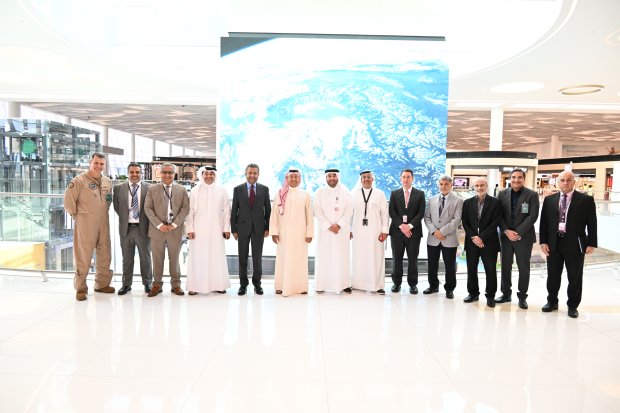Bahrain International Airport edges towards complete carbon neutrality

Bahrain International Airport (BIA) has taken another important step towards becoming a completely carbon-neutral facility, meeting all requirements to upgrade to Level 4 ‘Transformation’, as stipulated by the Airports Council International (ACI) Airport Carbon Accreditation program.
Bahrain International Airport (BIA) has taken another important step towards becoming a completely carbon-neutral facility, meeting all requirements to upgrade to Level 4 ‘Transformation’, as stipulated by the Airports Council International (ACI) Airport Carbon Accreditation program. BIA is the second airport in the Middle East to reach Level 4, becoming one of just 23 airports globally to hold this status. To celebrate this milestone, BIA’s operator and managing body, Bahrain Airport Company (BAC), held a ceremony recognizing its airport partners and the BAC Health, Safety, and Environment (HSE) team for their contributions towards this achievement.
The ACI program is the only institutionally-endorsed carbon management certification standard for airports. Recognizing facilities that successfully manage and reduce their carbon footprints, the program has six increasingly stringent levels of accreditation, Mapping, Reduction, Optimisation, Neutrality, Transformation, and Transition.
BAC Chief Executive Officer, Mohamed Yousif Al Binfalah said: “This milestone achievement would not be possible without the dedication of our HSE team and the tremendous support of our partners at the airport. While many airports enlist the support of international consultants to support the program and meet its requirements, BAC opted to empower its HSE team to undertake this challenge alone, spurred by their commitment and dedication to progress BAC’s sustainability objectives. We remain committed to operating BIA as an environmentally friendly facility and look forward to working collaboratively with our partners to further minimize its environmental impact.”
He added: “Tackling climate change is a pressing challenge. By making choices that have less harmful effects on the environment, the aviation ecosystem can be part of the solution and influence change. In 2021, the global air transport sector pledged to achieve net-zero carbon emissions by 2050. Achieving this goal requires the coordinated efforts of the entire industry, including airports. BAC is proud to support this global initiative and raise awareness about the importance of protecting the environment. We are also keen to play a role in the Government’s strategy to reach net zero emissions by 2060, which will help to create a cleaner and more sustainable future for the Kingdom.”
At Level 4, airports are required to align their carbon management ambition with global climate goals and transform their operations with absolute emission reductions in mind, while also strengthening their stakeholder engagement. In line with this, BIA expanded the scope of its carbon footprint to include waste management activities, the take-off and landing of all flights, and construction emissions, alongside all Level 3 emission sources.
BAC also established carbon reduction targets to achieve the Paris Agreement’s goal of limiting global warming to 1.5 degrees Celsius. Accordingly, it developed a carbon management action plan that includes an emissions trajectory and expected carbon reductions from all projects planned until 2050.
The trajectory includes all carbon reduction activities planned, such as retrofitting projects aimed at upgrading the energy efficiency of BIA’s existing facilities and infrastructure. Other carbon reduction projects include the installation of solar panels at multiple locations as renewable sources of energy, and the introduction of smart meters to improve the monitoring of electricity and water consumption at BAC’s facilities and those used by stakeholders.
BAC engaged its stakeholders in the net-zero journey by calculating their carbon footprints and setting a carbon reduction tracker for them as well as holding carbon management workshops during BIA Environment Committee meetings.


